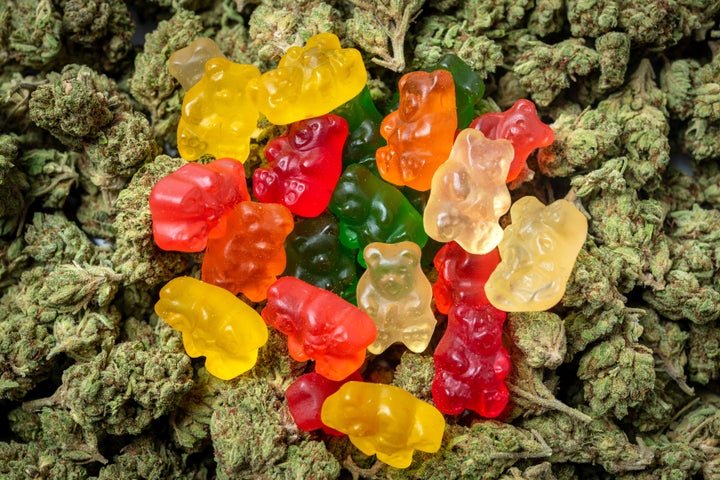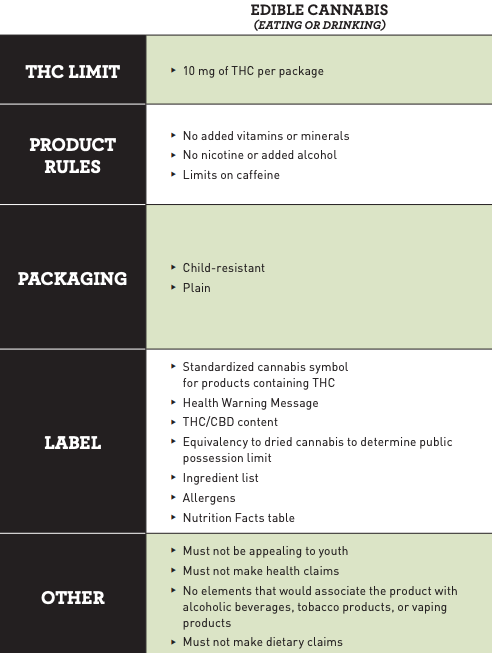
Marijuana edibles will soon be legal for purchase in Canada, but if you’re an experienced user, new regulations might mean that you need more than a single package to feel the desired effects.
“We think the regulations around edibles are going to be difficult to launch a product that consumers really want,” Anna Shlimak, head of investor relations and communications at Toronto-based cannabis company Cronos Group, told Investor’s Business Daily last week.
Final regulations for edibles, which includes products for eating or drinking, will go into effect on Oct. 17. They’re expected to hit retail shelves across Canada by mid-December.
The rules published earlier this month by Health Canada put a limit of 10 milligrams (mg) of THC per package. Meanwhile, the THC limit is 1,000 mg, or 10 times that amount, for cannabis extracts and topical products.

While 10 mg may not seem like a lot for some, experts say it can be more than enough for others.
Jenna Valleriani, a post-doctoral fellow at the British Columbia Centre on Substance Abuse, has been researching cannabis in Canada since 2013. She told HuffPost Canada the rules are designed to protect the majority of people.
“We have a lot of inexperienced users and 10 mg can actually be a lot for inexperienced users,” Valleriani said.
She’s not buying the argument that some producers will have issues creating a product people want with the 10 mg limit.
“For inexperienced cannabis users, if they pick up a package, the milligrams mean nothing to most people,” Valleriani said. “If there was a clearer understanding of a standard dose, the packages could potentially have more THC in them.”
In March, Valleriani co-wrote an article for HuffPost with Rielle Capler, post-doctoral fellow at the British Columbia Centre on Substance Abuse, highlighting the need for the government to settle on a standard dose for edibles. In it, they proposed 2.5 mg as the standard dose of THC for ingested cannabis in Canada.
“Setting a low standard dose ensures Canadians can easily gauge strength,” they wrote earlier this year.
“Just like with alcohol, we have standard doses,” Capler told HuffPost in an interview. “It doesn’t mean that that’s a limit to how much people can use, or even a limit to how much people can purchase at a time or one in package.”
Some people can handle 100 mg, which means they would need 10 packages of the maximum.
“The 10 mg cap is quite low from that perspective,” Valleriani said.
Canopy Growth CEO Bruce Linton recently revealed he felt the government was trying to “land on the safe side of the middle” on THC limits.
“I just think that most humans are accustomed to some kind of minimum volume for strength,” he told Investor’s Business Daily. “I think there’s going to be a bit of room for improvement there.”
Watch: Pot edibles may drive up life insurance premiums. Story continues below.
Some experienced users can handle ingesting more than 10 mg of THC, and that means they’ll need to buy multiple packages for desired effect.
“I’m sure 10 mg is limiting,” Valleriani said. “It’s limiting perhaps for experienced users.”
That opens the door to environmental concerns around packaging, which Capler described as “very important and very real.” And they come at a time when the federal government recently announced they would be phasing out single-use plastic products.
But academics say this is the result of the government taking a cautious approach, which Capler described as “tolerable for most people.”
After all, most of the adverse effects related to the drug occur when someone ingests too much.
“We’re slowly going to see these regulations open up over time, which is a lot easier than the reverse.”
- Jenna Valleriani, cannabis researcher
“When it’s ingested, the effect can be quite strong,” Capler noted. “It’s different for different people, but it’s something where people will want to avoid unpleasant experiences.”
And while the rules may not be perfect, the academics say they can always be changed down the road.
“We’re slowly going to see these regulations open up over time, which is a lot easier than the reverse,” Valleriani said. “I think for now, it is entirely appropriate to start low.”
She acknowledged the government is trying to take things slow as Canadians need time to “catch up” on their knowledge of cannabis consumption.
“Personally, I wouldn’t mind seeing a bit of a higher maximum per package, but for now, I don’t think that it’s necessarily a bad thing.”
HuffPost reached out to both Cronos Group and Canopy Growth but neither company responded to the request for a comment.